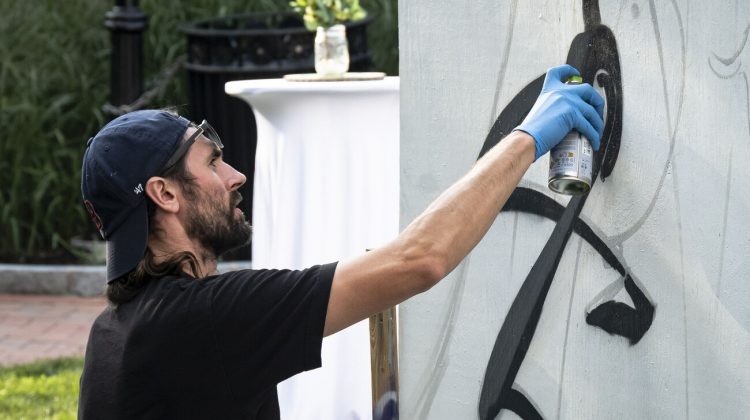LYNN — Now, this is a story all about how, graffiti is street art and popular now.
The Lynn Museum held the year’s third installment of Final Fridays at Frederick Douglass Park on Friday night, honoring graffiti and hip-hop at the Graffiti Get Down.
“It’s definitely one of my favorite (Final Fridays), because this one is celebrating the art of visual art and hip-hop together,” Jah’Nyah Spencer, the youth and community engagement coordinator at the Lynn Museum, said.
The event was free to attend, with food and drinks provided by the Golden Monkey Cafe.
Graffiti Get Down featured four live artists — Croc Paints, Okaje, Sophy Tuttle, and Joey Free — who created street art on plywood. Musical guests 97 Caine, CalvinKleinCaterpillar, and Luke Bars performed as well.
“If you want to chill and take in a creative environment, that’s what this is for,” Spencer said.
Vendors included Sin Kid, Sh0ckMan, Michael Aghahowa, Forte Worldwide, Thirteenvic, Clothes by Tomo, and MUNAMUSKIE.
“One of the most important things about graffiti is that graffiti was able to pave the way for street art, and street art is definitely a really big staple here in Lynn,” Spencer said.
She provided a bit of history on graffiti, and how it became what it is today.
Spencer said that in north Philadelphia, born and raised, is where graffiti spent most of its early days.
According to Streets Dept, a guide to Philadelphia’s art and public spaces, a man named Darryl McCray, better known as “Cornbread” or the “Godfather of Graffiti,” began tagging his name across Philadelphia in 1967, starting the modern graffiti movement.
Spencer said in the 1980s, kids from New York City started to catch on to the movement.
“Some kids from the Bronx, they picked it up, and then they started doing graffiti on the trains and in Central Park, really trying to get the governor and a lot of other officials in the city to hear them and try to provide more resources,” Spencer said.
She added that graffiti was considered vandalism at the time and was illegal.
“But now, we’ve been able to take something that was considered vandalism and actually make it an art form and actually monetize off of it and actually be respected for our craft,” Spenser said. “Without graffiti, a lot of things in art and hip-hop would not be where it is today.”

